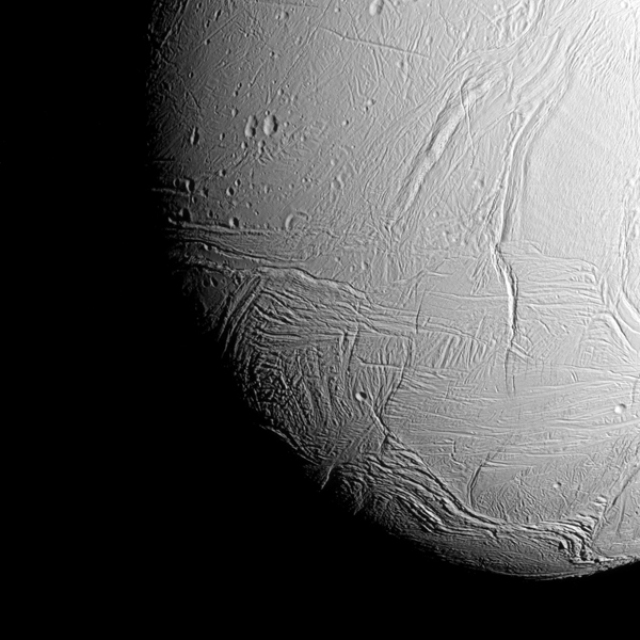NASA's Cassini spacecraft has begun transmitting its latest images of Saturn's icy, geologically active moon Enceladus, acquired during the dramatic Oct. 28 flyby in which the probe passed about 30 miles (49 kilometers) above the moon's south polar region. The spacecraft will continue transmitting its data from the encounter for the next several days.
 This unprocessed view of Saturn's moon Enceladus was acquired by NASA's Cassini spacecraft during a close flyby of the icy moon on Oct. 28, 2015. Image credit: NASA/JPL-Caltech/Space Science Institute
This unprocessed view of Saturn's moon Enceladus was acquired by NASA's Cassini spacecraft during a close flyby of the icy moon on Oct. 28, 2015. Image credit: NASA/JPL-Caltech/Space Science Institute
"Cassini's stunning images are providing us a quick look at Enceladus from this ultra-close flyby, but some of the most exciting science is yet to come," said Linda Spilker, the mission's project scientist at NASA's Jet Propulsion Laboratory in Pasadena, California.
Researchers will soon begin studying data from Cassini's gas analyzer and dust detector instruments, which directly sampled the moon's plume of gas and dust-sized icy particles during the flyby. Those analyses are likely to take several weeks, but should provide important insights about the composition of the global ocean beneath Enceladus' surface and any hydrothermal activity occurring on the ocean floor. The potential for such activity in this small ocean world has made Enceladus a prime target for future exploration in search of habitable environments in the solar system beyond Earth.
In addition to the processed images, unprocessed, or "raw," images appear on the Cassini mission website at:
http://saturn.jpl.nasa.gov/mission/flybys/enceladus20151028
Cassini's next and final close Enceladus flyby will take place on Dec. 19, when the spacecraft will measure the amount of heat coming from the moon's interior. The flyby will be at an altitude of 3,106 miles (4,999 kilometers).
Additional information and multimedia products for Cassini's final Enceladus flybys are available at:
http://solarsystem.nasa.gov/finalflybys
The Cassini-Huygens mission is a cooperative project of NASA, ESA (European Space Agency) and the Italian Space Agency. NASA's Jet Propulsion Laboratory in Pasadena, California, manages the mission for the agency's Science Mission Directorate in Washington. JPL is a division of the California Institute of Technology in Pasadena. The Cassini imaging operations center is based at the Space Science Institute in Boulder, Colorado.
For more information about Cassini, visit:
http://www.nasa.gov/cassini
http://saturn.jpl.nasa.gov